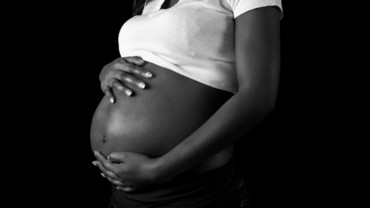Scientists have found that air pollution is one of the leading causes of the increase in miscarriages. According to the report, “Acute effects of air pollutants on spontaneous pregnancy loss: a case-crossover study” the implication of heavy air pollution on women and their fetus is as bad as a woman smoking cigarettes during pregnancy.
In another study carried out two years ago in London, UK, the researchers found that particles of air pollution rest in pregnant women’s lungs. These particles then travel through their bodies and settle in their placentas. At the time, the researchers said it is possible that the particles had entered the fetus’ body as well.
How does this affect births and babies?
While they did not state exactly how this affects the fetus pre or post birth, another study confirmed some of the potential effects. The 4-year study, analysed on over 500,000 births, determined the link between air pollution and babies after birth. The scientists found a 15% increase in the risk of low birth weight for every additional 5 micrograms per cubic metre (µg/m3) of fine particle pollution. They also found that women in the study who had consumed more polluted air were at higher risk of premature birth; both of which are factors that could lead to lifelong health issues.
This new report, which focused on the effect of poor air on unborn children, reveals even more. The study was led by Dr Matthew Fuller at the University of Utah’s department of emergency medicine. One of the research teams assisted with the study as well. Fuller gained interest in the issue when one of his relatives miscarried during a high pollution season in Utah.

Fuller’s Research
Fuller teamed up with population health scientist, Claire Lester and others to find out if his hunch was real. The team then analysed the records of more than 1,300 women who attended the emergency department. The women, who lived in Salt Lake City and other surrounding urban areas, had miscarriages between 2015 to 2017.
“Many of us think there is an effect [of air pollution] on our health, but to find out there are actual effects on unborn children is very upsetting”, Fuller said in a conversation with The UK Guardian.
The study went thus: they examined a woman’s exposure to air pollution at the time of the miscarriage. They then compared it to times when she did not miscarry; meaning age, income and other personal factors were taken into account. The study revealed that the strongest link to the miscarriages was the level of Nitrogen Dioxide (NO2) in the seven days leading up to the miscarriage. Nitrogen Dioxide can cause poor lungs and other respiratory issues.
Is this applicable to Nigeria?
While there is no direct study on Nigeria and the effects of pollution on pregnancy here, these findings can be applied. In 2018, the Health Effects Institute published the annual State Of Global Air report. It lists Nigeria as the 4th deadliest place to live in the world (deadliest in Africa) due to air pollution. The report states that everyone in Nigeria (100% of the population) is living above WHO air quality guidelines. The United States has the lowest rate of 3% while the EU and Japan are at 80%
The report reflects some of Nigeria’s pollution issues: the extreme cases like the soot in some areas, and the landfill burning. Comparing the highlighted areas in the fertility reports, this suggests that pregnant women and unborn fetuses in Nigeria are highly susceptible to these effects.
The researchers all agree that the best way to avoid these effects is to reduce air pollution. In the short run, they suggest women in polluted areas should visit their doctors constantly and buy air filters for their homes (though Fuller highlights that for low-income women, the latter suggestion could be unrealistic). Hence, anti-pollution campaigns such as SustyVibes’ #STAREDOWNONPOLLUTION and street conferences, as well as climate change reporting, are important in ensuring the safety of unborn Nigerians.

